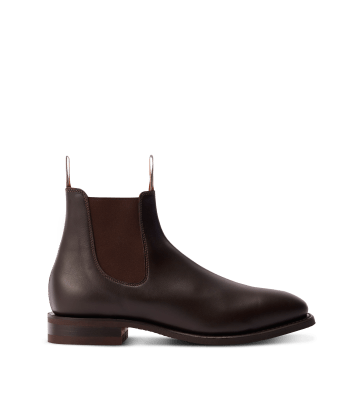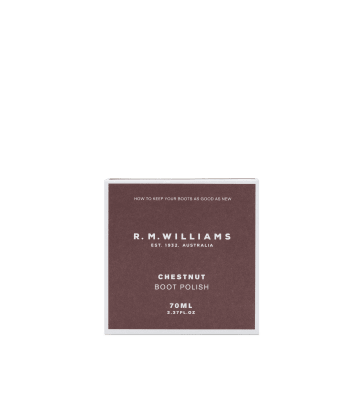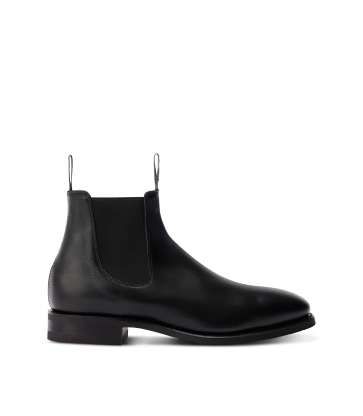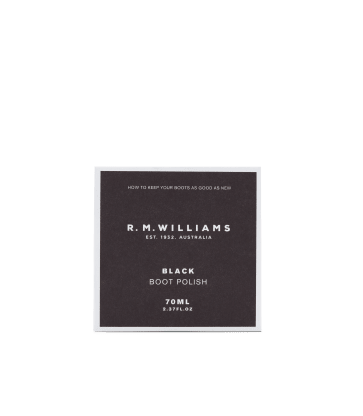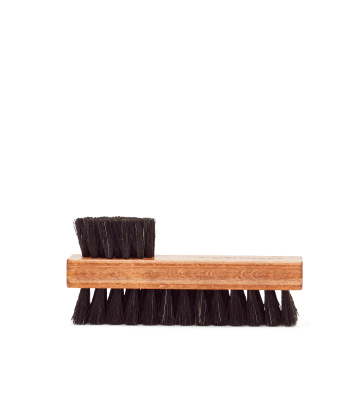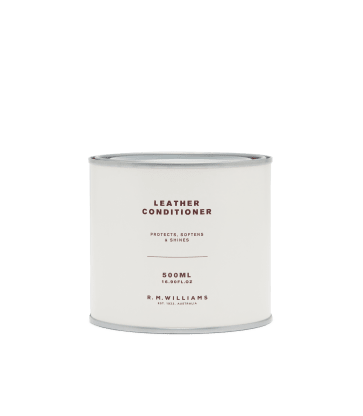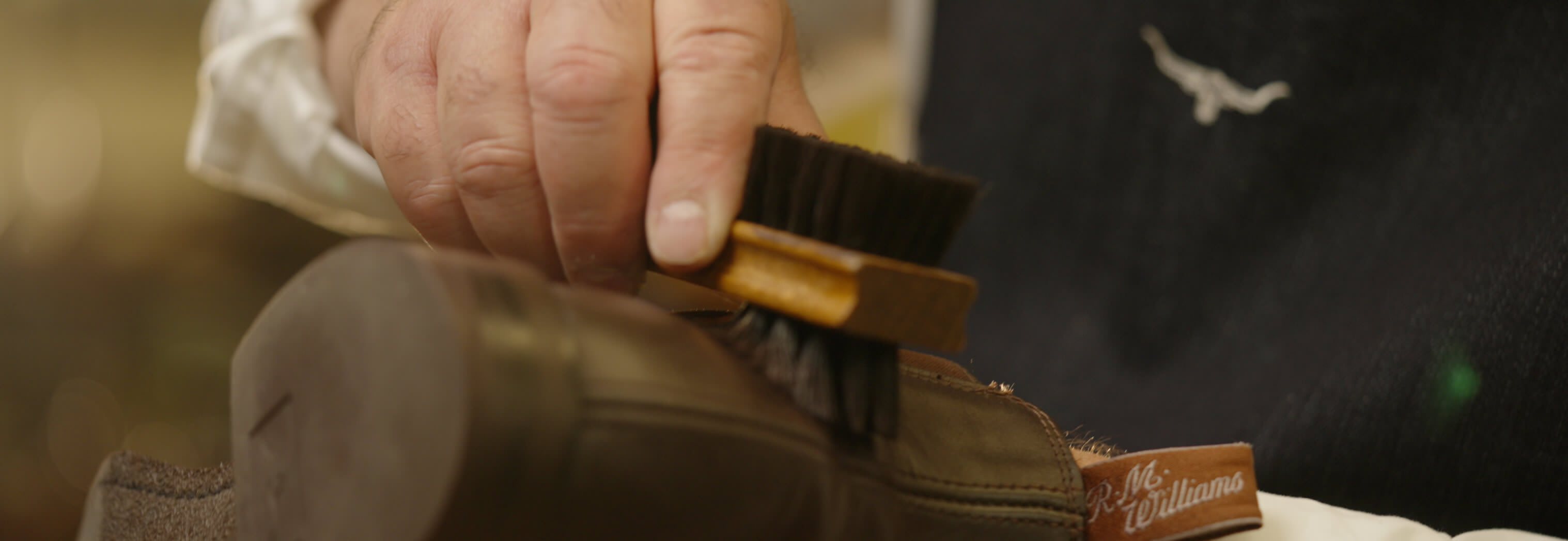
An investment, not a purchase
Your new R.M.Williams boots have been crafted by hand at our workshop in Adelaide, South Australia, using time-honoured processes. Our highly-skilled artisans use the finest available leathers and components to create boots that will stand the test of time, serving as reliable companions on all of life’s journeys. With regular care and maintenance, you can prolong the lifespan of your boots and ensure they look and feel great for many years to come.
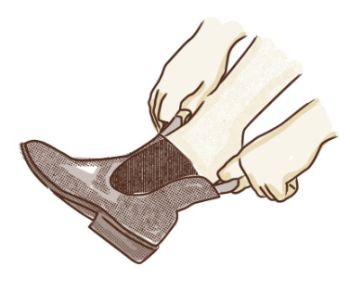
Everyday boot care
The daily rituals that we recommend to keep your boots looking fresh.
Wearing
Allow the two ‘tugs’ to take the strain when pulling on your elastic sided boots; this will keep the back strong and spread the strain over the ‘tugs’ and the elastic.
Don’t remove your boots by using the other foot to pull them off. Always pull the boot off with your hand from the back heel.
Fine leather boots can require a full day to dry out from natural perspiration. It’s recommended to alternate wearing your pairs of boots every few days, if possible, to let them dry out from natural perspiration.
Cleaning and drying
Mud or dirt should be removed from footwear when still wet, using a damp cloth and then waiting until dry before cleaning and polishing.
If your footwear becomes damp or saturated with water, allow them to dry naturally. Never use direct or forced heat, as this will harm the leather upper and may damage the sole.
Storing
When you’re not wearing them, your boots can be kept in shape with shoe trees. These are a must when boots have become saturated with water, because the shoe trees will allow the boots to dry completely without distortion.
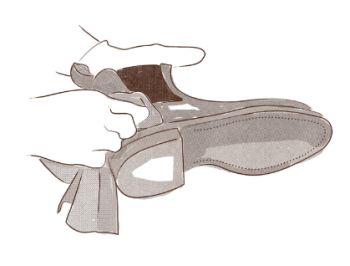
Ongoing leather care
A consistent care routine is the best way to avoid lasting damage and maintain the look and feel of your boots.
Polishing
Use R.M.Williams Stockman’s Boot Polish regularly to maintain the colour of your boots and remove scuffs. This keeps the smart finish of your leather boots, particularly for dress boots.
We recommend using our time-honoured formula as it is free of alcohols and chemicals which can damage leather.
Do not use Stockman’s Boot Polish on vesta or greasy kip leathers, as it drastically changes the colour of the boots.
Related product
Cleaning and conditioning
Regular cleaning and conditioning with high quality products will increase your leather’s lifespan and allow you to enjoy it for many years.
The leather upper needs to be conditioned to prevent it from drying out and cracking over time. Be careful not to over condition; leather also needs to breathe. Therefore, if you clean your boots every week, do not use conditioner each time.
Make sure to read our Boot maintenance guide for specific care instructions for each leather type, as we do not recommend leather conditioner and cleaner for all types.
Related product
Maintenance
The regularity of your care routine depends on how often you wear your boots, and for what purpose.
Casual to light wear – minimal maintenance, every 3 months.
Dress and office wear – regular maintenance, every 8 weeks.
Outdoor work wear – high maintenance, every 4 weeks.

Sole life
Keeping vigilant on the condition of your soles can be the difference between a simple re-sole and a complete re-last. Make sure you know what to look out for, and when to bring them back to us for a tune-up.
Important signs to look for
Replace the sole before the wear extends to the innersole. This way, the boots can be re-soled without having to be re-lasted.
Replace the heel rubber before the wear extends to the leather heel stack underneath, so the entire heel does not need to be replaced.
Additions or modifications to either sole or heel, such as synthetic top-soles should be avoided, as these can affect the balance and comfort of the boots and can lead to premature failure in either the sole or upper.
Leather soles
As a guide, R.M.Williams believes that leather soles have a wear rate of 9 – 12 months (as per the International Standards) based on an average wear of 3 to 4 days per week, however most customers will exceed this period. Sole wear will vary based on the wearer, usage and surfaces walked on.
When leather soles wear thin, they tend to absorb more moisture. Repairing your boots in good time is a practice worth observing as fine quality boots can easily be ruined due to overdue repair work.
Rubber soles
Rubber soles are the more durable option and do offer a better wear rate.
As a guide, R.M.Williams believes that rubber soles have a wear rate of 18 – 24 months (as per the International Standards) based on an average wear of 3 to 4 days per week, however most customers will exceed this period. Sole wear will vary based on the wearer, usage and surfaces walked on.
